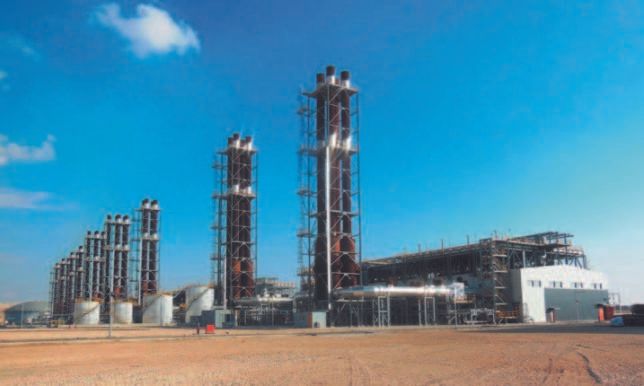RECIP ENGINES UP THEIR GAME
MODERN RECIPS ARE SEIZING MARKET SHARE IN THE SMALL- AND MID-SIZED POWER PLANT SECTOR

Caption: Since late 2014, IPP3 (537 MW) and its sister reciprocating
engine plant IPP4 (250 MW) have captured the daily peaks
in electricity demand in Jordan.
Reciprocating engines are no longer relegated to small power projects or emergency generation. Today’s engines can function up to plant sizes of 600 MW and run on multiple fuels. They can be used in baseload or for peaking power. They can also operate in combined cycle mode and as part of a combined heat & power (CHP) plant.
The world’s largest internal combustion engine power plant, for example, is near Amman, Jordan. It is powered by 38 Wärtsilä 50DF multi-fuel engines with a capacity of 573 MW. Amman Asia Electric Power Company (AAEPC) owns the plant, which is known as IPP3. Its purpose is to deal with sharp daily peaks of electricity demand in Jordan.
“By starting one engine at a time, the plant can follow the demand precisely,” said Taemin Kim, Administration Manager of AAEPC.
A 250 MW sister plant known as IPP4 is also in commercial operation. Since the two engine plants now cover most of the peak demand, the gas turbine (GT) power plants provide steady baseload power. These Wärtsilä plants can run on fuel oil and natural gas.
The Jordan plants are far from the only examples of large-scale reciprocating engines facilities. Another under construction and owned by Energía del Pacífico in Acajutla, El Salvador, will run on LNG-based natural gas. The 378 MW facility will incorporate 19 Wärtsilä 50SG engines and a steam turbine (ST). It uses a closed-loop cooling system that requires zero water consumption.
Simple cycle efficiencies of recip engines lie in the 46%-to-49% range. Exhaust gases from reciprocating internal combustion engines are around 360ºC. As a result, Heat Recovery Steam Generators (HRSGs) designed for reciprocating engine plants are simple in design. They provide steam at one pressure level— about 15 bar. One engine can be used to preheat all the HRSG exhaust gas boilers with steam to keep the HRSGs hot and enable fast starting.
The ST can be run with 25% of the engines at full load, or 50% of the engines at half load. For a 12-engine power plant of around 200 MW, only three engines need to be operating to produce enough steam to run the steam turbine. Reciprocating engines can burn a variety of fuels, including natural gas, light fuel oil, heavy fuel oil, biodiesel, biofuels and crude oil.
Engine sizes from 4-to-30 MW. Lean-burn technology means that units can reach full load in two minutes under hot start conditions: Cooling water is preheated and maintained above 70°C, engine bearings are continuously pre-lubricated, a jack-up pump supplies pre-lubrication to the generator bearings, and the engine is slow turning. As a result of being online in a couple of minutes, the power plant can quickly adjust load by bringing additional engine sets online to meet changes in electric demand.
These plants also have a wide range for emissions-compliant turndown. As load is decreased, individual units are shut down to reduce output. The engines that remain operating can generate at full load. The output of a 300 MW plant can be turned down to 18 MW. Combustion engines are less sensitive to temperature and humidity, retaining their rated efficiency and power output over a broader range of ambient conditions. At an ambient temperature of 40°C, combined cycle efficiency decreases by 3.5% compared to ISO conditions.
In a Wärtsilä Flexicycle plant, efficiency drops by 1.1%. Electric power represents one of the largest consumers of water globally, about 15% of the world’s water withdrawals. In the U.S., over 40% of freshwater withdrawals are for thermoelectric power. A combined cycle gas turbine power plant with a recirculating system will consume approximately 780 liters/MWh. In combined cycle, a Flexicycle plant with a cooling tower will consume 409 liters/MWh. In addition, water-stressed regions can deploy Dry Flexicycle plants. They use air-cooled condensers (dry cooling) to reduce water use to near zero. The cooling system uses a radiator closed-loop circuit and fans to help dissipate heat.